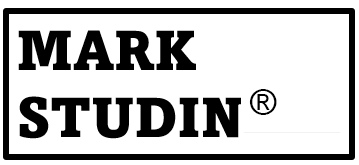Course Name:
Primary Spine Care 16: Clinical Necessity for Relationships with MD's and Lawyers Live Webinar
Chiropractic CE: 15 Hours
Medical CME: 15 Hours
Primary Spine Care 16: Clinical Necessity for Relationships with MDs and Lawyers Live Webinar
November 2-3, 2024
Course Description:
This course details the clinical skills required to collaborate with medical specialists and be considered an expert in the medical-legal community. These skills encompass triage, neurodiagnostics, and advanced imaging interpretation, all of which will be thoroughly taught in this course, ready for immediate application in your practice.
Key Learning Objectives:
1. Triage Skills: Learn to effectively assess and prioritize patient conditions to determine the urgency of care needed, ensuring optimal patient outcomes.
2. Neurodiagnostics: Gain expertise in diagnosing neurological disorders through various diagnostic techniques and tools.
3. Advanced Imaging Interpretation: Develop the ability to accurately interpret advanced imaging results such as MRIs, CT scans, and X-rays, crucial for informed clinical decision-making.
Goals:
- Equip yourself with the skills to collaborate with medical specialists effectively.
- Improve patient care through advanced diagnostic and interpretive abilities.
Module 1 – 2 Hours - Current and Future Trends in Documentation & Practice Growth - History Taking & Examination
Mark Studin DC,
Don Capoferri DC
Evidence-Based demonstrative documentation is typically the arbiter for creating successful patient-centered collaborative care. This "reputation building" focus has already helped develop relationships with MD PCPs, MD Specialists, ERs, and Urgent Care Centers. This demonstratively removed the Non-Specific Back Pain "Dogma" that too many have held because technology and the evidence have not supported what chiropractic has known for over a century. We now have those tools, and once learned, chiropractic utilization "skyrockets” because of the evidence.
Module 2 – 2 Hours - MRI Spine Case Review -Diagnostic Testing & Differential Diagnosis
Patricia Roche DO, Radiology, Neuroradiology
Mark Studin DC
Clinical case review of MRI's including sagittal, axial, T1, T2, STIR, and proton density sequences. The vertebrate, spinal cord, discs, nerve roots, thecal sac, posterior longitudinal ligament, epidural veins, and fat saturation pulses will be identified. Pathology will include bulges, herniations, protrusions, extrusions, myelomalacia, cord edema, and Schmorl's nodes.
Module 3 – 1 Hour - Triage Part 1 -Diagnostic Testing & Differential Diagnosis
Mark Studin DC
Don Capoferri DC
Triage Skills: Learn how to effectively assess and prioritize patient conditions in chronic and trauma cases to determine the urgency of care needed, ensuring optimal patient outcomes. Then, create a care-path using all available tools to conclude and accurate diagnosis.
Module 4 – 2 Hours Age-Dating Herniated Disc, Diagnostic Testing & Differential Diagnosis
Mark Studin DC
Don Capoferri DC
Age-dating herniated discs and trauma is a critical skill for an expert in spine. It combines the clinical skills of interpreting X-ray, MRI, and other imaging modalities with a clinician's understanding of joint pathology. This level of expertise is critical when collaborating with other physicians or working in the medical-legal environment as an expert. Age-dating pathology is also central to creating a prognosis on your patient's recovery and must be evidence-based rationale.
Module 5 – 2 Hour - Updated Trends in Spinal Biomechanics and Ligamentous Pathology - History Taking & Examination
Mark Studin DC
Don Capoferri DC
Diagnosis and management of ligament (connective tissue) pathology in chronic and acute patients. Evidence-based physiology of morphology, mechanisms, and sequella to trauma inclusive of compensatory actions of the human spine. Master-Class in ligaments; anatomy, physiology, vascularization, neurological innervation, tissue repair and how they all relate to clinical practice. Ligament pathology correlates to the mechanisms of path-neuro-biomechanical lesions (vertebral subluxation complex). Also, how ligaments play a critical role in chiropractic spinal adjustment and defining the chiropractic spinal adjustment mechanisms.
Sunday, November 12, 2023
Module 6 – 1 Hour - Case History Presentation- History Taking & Examination
Mark Studin DC
Don Capoferri DC
Clinical grand rounds of a case include disc, ligament, and spinal pathology. The creation of the diagnosis, prognosis, and treatment plan. The changing of treatment plans and diagnosis based upon follow-up examinations.
Module 7 – 2 hours – Latest Evidence on Making Non-Specific Back Pain Specific - Diagnostic Testing & Differential Diagnosis
Mark Studin DC
Don Capoferri DC
An evidence-based approach to spinal diagnosis and dispelling “non-specific back pain.” A tutorial on taking the evidence and collaboratively with medical specialists managing cases based upon the conclusive diagnosis.
Module 8 – 3 Hours - Creating Ethical Collaborative Relationships and the Documentation that Fosters Those Relationships -Ethical Billing & Coding
Mark Studin DC
Don Capoferri DC
Discussing the Future trends in chiropractic and clinical record keeping is an integral part of good professional practice and delivering quality healthcare. But as healthcare changes with new technology and reimbursement models, so should clinical documentation. It can be helpful to go back to the basics. In this step-by-step guide to taking perfect clinical notes, we will cover:
- Why write clinical notes
- The importance of context
- What to include in a clinical note
- Tips for better clinical documentation
- Basic legal considerations
Total Academic Time: 15 Hours
